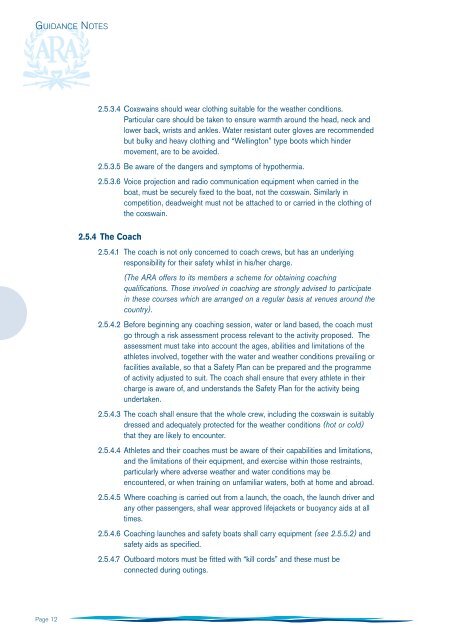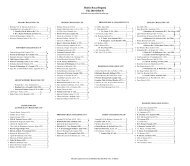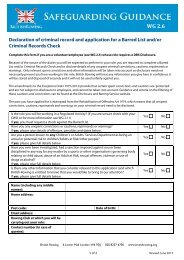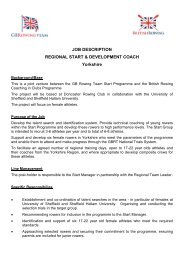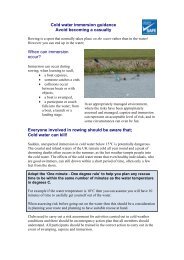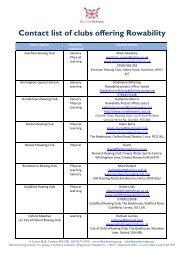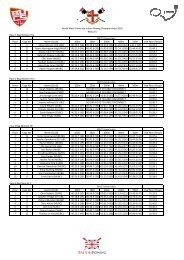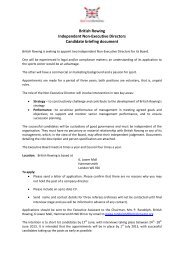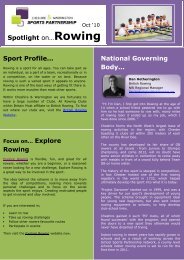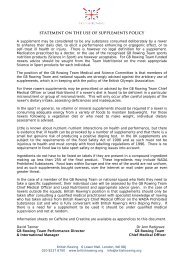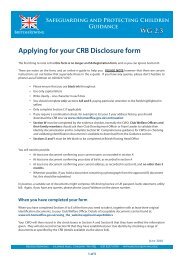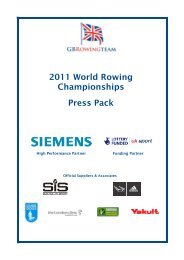Create successful ePaper yourself
Turn your PDF publications into a flip-book with our unique Google optimized e-Paper software.
GUIDANCE NOTES2.5.3.4 Coxswains should wear clothing suitable for the weather conditions.Particular care should be taken to ensure warmth around the head, neck andlower back, wrists and ankles. <strong>Water</strong> resistant outer gloves are recommendedbut bulky and heavy clothing and “Wellington” type boots which hindermovement, are to be avoided.2.5.3.5 Be aware of the dangers and symptoms of hypothermia.2.5.3.6 Voice projection and radio communication equipment when carried in theboat, must be securely fixed to the boat, not the coxswain. Similarly incompetition, deadweight must not be attached to or carried in the clothing ofthe coxswain.2.5.4 The Coach2.5.4.1 The coach is not only concerned to coach crews, but has an underlyingresponsibility for their safety whilst in his/her charge.(The <strong>ARA</strong> offers to its members a scheme for obtaining coachingqualifications. Those involved in coaching are strongly advised to participatein these courses which are arranged on a regular basis at venues around thecountry).2.5.4.2 Before beginning any coaching session, water or land based, the coach mustgo through a risk assessment process relevant to the activity proposed. Theassessment must take into account the ages, abilities and limitations of theathletes involved, together with the water and weather conditions prevailing orfacilities available, so that a <strong>Safety</strong> Plan can be prepared and the programmeof activity adjusted to suit. The coach shall ensure that every athlete in theircharge is aware of, and understands the <strong>Safety</strong> Plan for the activity beingundertaken.2.5.4.3 The coach shall ensure that the whole crew, including the coxswain is suitablydressed and adequately protected for the weather conditions (hot or cold)that they are likely to encounter.2.5.4.4 Athletes and their coaches must be aware of their capabilities and limitations,and the limitations of their equipment, and exercise within those restraints,particularly where adverse weather and water conditions may beencountered, or when training on unfamiliar waters, both at home and abroad.2.5.4.5 Where coaching is carried out from a launch, the coach, the launch driver andany other passengers, shall wear approved lifejackets or buoyancy aids at alltimes.2.5.4.6 Coaching launches and safety boats shall carry equipment (see 2.5.5.2) andsafety aids as specified.2.5.4.7 Outboard motors must be fitted with “kill cords” and these must beconnected during outings.Page 12


